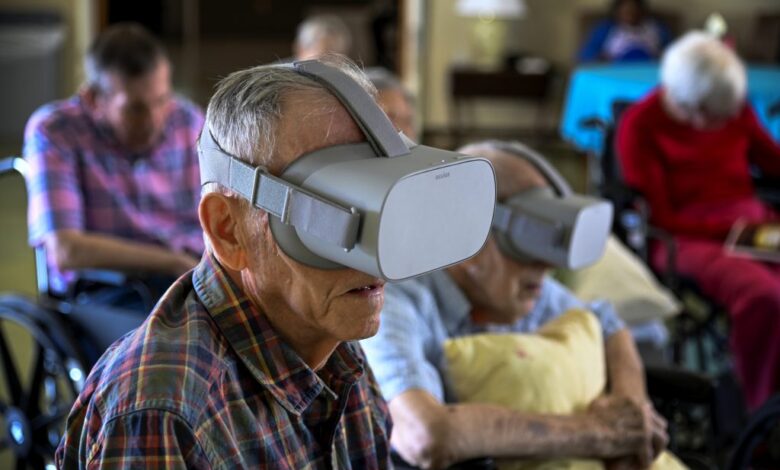4 Benefits of Virtual Reality for Seniors

Virtual reality (VR) has become a trending technology used not only for video games but also for therapy for people with different physical and mental issues. VR is a technology that allows users to perceive and feel as if they’re in a different time and place. As it started to become more popular in treating physical and mental disorders in patients both young and older, many people have started to accept this new way of treatment with more ease.
However, when we think of cutting-edge technology, senior citizens aren’t usually the first to come to mind. The good news is that VR has already entered the senior living industry, and is being used within retirement communities to help improve medical care, reduce loneliness, and provide adventure and stimulation for the elderly.
Here are some of the benefits of using VR that help the elderly
VR helps with mental health
Senior citizens who experience pain usually tend to develop anxiety and depression as well as other mental issues. VR can boost their mood by helping them change their surroundings even when they’re at home. The best part about this technology is you can use virtual reality therapy from your own home instead of going to a clinic. This allows for better engagement in activities involving physical therapy and improving their mental health.
VR can also help patients with Alzheimer’s disease or other types of memory loss. Some patients are even experiencing reduced symptoms of dementia. Alzheimer’s patients usually suffer from short-term memory. However, their long-term memory may still be good. That’s why when they use a VR headset to see a familiar place, their mind usually opens up and allows them to tell stories of their past. It also gives motivation to those with some kind of physical affliction.
VR improves physical health
VR therapy is intrinsically interactive. It allows its users to explore new places as well as activities through virtual reality, which encourages movement as a natural reaction. Many older adults experience improved physical health due to arm movement, core engagement, and a reduced perception of physical pain. VR therapy encourages distractions to alleviate the pain that patients feel.
It can also be great chronic pain relief, as VR can take the patient to a tropical island or another place where they’re completely relaxed. It eases the pain by providing a distraction during medical procedures that may sometimes be uncomfortable. That’s why VR is being used in many retirement communities to improve medical care. This technology can also be used to improve cognitive health in elderly patients. It can help patients retain their motor and cognitive skills, and allows them to build new mental and motor skills.
Confronts social isolation
A report from the National Academies of Sciences, Engineering, and Medicine suggests that approximately one-quarter of Americans aged 65 and older are feeling socially isolated. Loneliness and social isolation put senior citizens at risk for dementia and other serious medical conditions. Additionally, the elderly are at increased risk for social isolation and loneliness as they’re more likely to face factors like living alone, hearing loss, chronic illnesses, and the loss of family or friends.
Note that loneliness is the feeling of being alone, no matter the number of social contacts. On the other hand, social isolation is a lack of social connections and can lead to loneliness in some people. VR combats these issues by creating an immersive and interactive VR environment, allowing patients and their families to explore VR spaces together. This serves as a bridge for those that live long-distance.
VR helps stimulate the brain
For years, nursing homes have provided puzzles and bingo for their inhabitants, as it is very important for senior citizens to participate in brain-stimulating activities. Now, many facilities are utilizing VR technology as a means to keep older adults’ brains stimulated. VR allows the senior citizens to explore a new environment whether it takes them down a path in a jungle or into a nightclub – it all depends on the personality of the user.
Some use this technology as an enhanced movie, while other nursing homes use simple games that utilize VR. Regardless of how it is used, it helps keep the brain active, responsive, and alert. As the world changes it can easily be added to a nursing home’s list of activities that usually involve move nights and card tournaments.
Final thoughts
There are plenty of other benefits of using VR for senior citizens including providing educational opportunities to learn new things. VR provides a new way for the elderly to connect with the world around them and disconnect from traditional learning environments. It established new forms of learning through real-life experiences and helps them improve their overall health by engaging in various activities.





